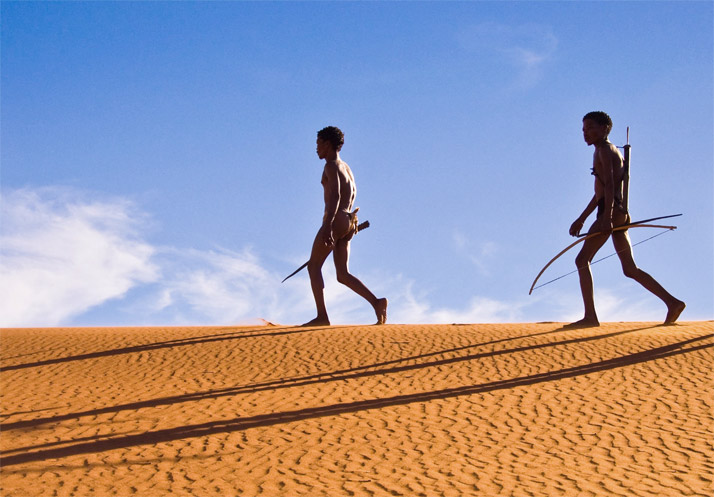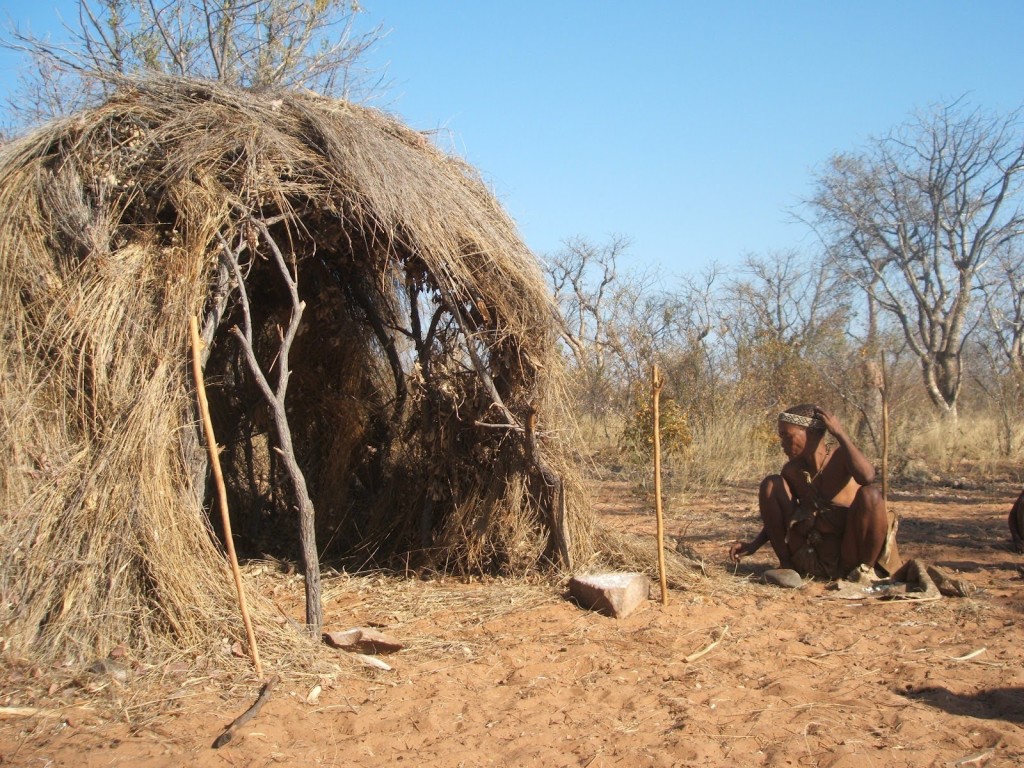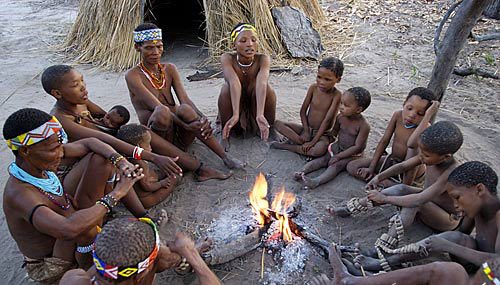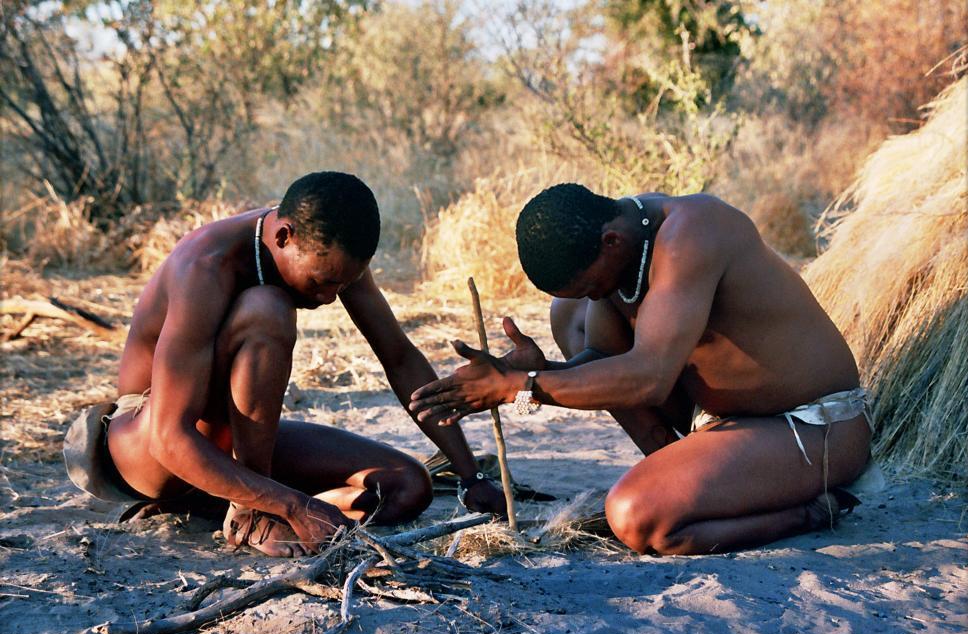By Sean Fagan
.
Introduction
.
The San People
Many of the San people (or Kalahari bushmen as they are sometimes known) are indigenous to arid regions of Botswana, Namibia, South Africa and Angola.
It is believed that there are about 100,000 bushmen left. Many can still be found practicing a hunting and gathering lifestyle.
They often dwell in places where the heat can be oven-like, where water is scarce and where game is hard to come across (often requiring exhausting hunting trips to acquire).
In this article, I have put together some observations about the San people. I've also included 4 important bushcraft lessons that we, as modern bushcrafters, can learn from the San people.
I hope you enjoy these observations and more importantly, you have enjoyed the video depicting an incredibly interesting people - a people that can give us a peek into our own prehistoric past - for there are many similarities between how the San people live and how our own hunting and gathering ancestors lived - thousands of years ago.
To my mind, this is a special connection.
.
.
1. Helping out is expected
Many hands make light work
.
.
Just after the 1 minute mark of the video, one of the men goes about lighting a fire with a hand-drill.
Without seemingly being asked, another man gets dry grass for tinder and also assists in stabilising the hearth board of the man using the hand-drill.
There is an almost unspoken assertion that hunting and gathering people work as team. It's something I've noticed in many videos of people living a hunting and gathering life.
One of the great benefits of living tribally is the sharing of labour.
Living outdoors, especially on a subsistence level, is hard work but is easier and more efficient when the work is shared - it's one of the great, time-tested benefits of the hunting and gathering life.
It makes good survival sense, fosters bonds, and encourages good morale between people who live with and depend on each other - 24 hours a day, 7 days a week.
Tip:
A concerted group effort and supporting your fellow outdoor companions is a must for group morale when outdoors - it's a large part of enjoying the outdoors - as a group.
It doesn't matter if it's a long, arduous expedition or a casual, weekend camping trip - getting along and helping out is key.
.
.
2. Living outdoors is a very physical lifestyle
Hunting & Gathering people are fit and strong
.

The demands of living outdoors creates fit, healthy bodies that are capable of impressive feats of endurance (photo: Wikimedia Images).
.
.Living outdoors is not for the idle. Almost everything that needs to be done as regards sustaining yourself and others requires physical work.
Sourcing and carrying water is work.
Tracking game, mile after mile, to acquire much needed meat is hard work.
Spending hours gathering enough wild plant forage or firewood requires effort.
It's a lifestyle that is physically taxing and requires reserves of endurance and patience.
Nevertheless, the San people are fit, strong, and possess the enabling capabilities and health benefits associated with being physically robust.
Tip:
If, like most people, you have a lot on your plate and can only practise bushcraft occasionally - consider starting (or continuing) an exercise regime that will improve your overall physical robustness for the outdoors.
Be shrewd in your exercise selection.
If you like hiking, then consider including including some walking/hiking during your work week (preferably with a backpack and occasionally uphill to keep it realistic).
If you like carving a lot, consider doing resistance exercises which build up your forearm and grip strength, and overall upper body strength.
Be specific in your exercises and strive to build up stamina in those areas of endeavour.
.
.3. A casual pace to their lives
Haste makes waste
.

The San people know the benefits of resting in a good shelter - especially during the midday sun (photo: Wikimedia Images).
.
One of the compelling reasons why the bushmen in the video go about their tasks at what seems like a leisurely pace is because they live in a desert climate.
The daytime temperatures of the Namib desert, for example, can be a searingly hot 30 – 50 °C.
The San people are also well attuned to the benefits of conserving energy, especially since acquiring energy (food) requires an output of energy, and since there is no guarantee of obtaining food, then it's best to go about things at a leisurely pace.
Exhaustion is best avoided.
Wild animals are well attuned to the benefits of energy conservation as are people that live very close to nature and depend heavily on her resources, not just food, but for everything - firewood, shelter, water, etc.
Tip:
Practise bushcraft with a clear-headed, generally relaxed approach.
Good outdoor decisions are based on considering all important factors. This process can take time.
Know when to push yourself and when to back off.
When on the move - pace yourself well - start slow, finish strong.
.
.
.4. Self-entertainment & self expression
Learn How to Entertain Yourself & Others
.

The San people are renowned for their rich lore of traditional singing and dancing (Photo: Wikimedia commons).
.
The ability to amuse yourself and others when outdoors is very much an underrated aspect of living outdoors.
Night-time by a fire is a great time for chilling out and having a good time. Casual conversation, story-telling, singing and playing music can come to the fore.
These were the ways our ancestors most likely entertained themselves and a lot of us have lost that ability to provide our own entertainment.
One of the aspects of hunting and gathering people I greatly admire is their self-expression.
Whether it’s an aboriginal woman deep in an Australian desert, singing by her fire as she cooks her food, or a San bushman verbally paying homage to his hunted quarry – their ability to emotionally connect and freely express their emotions about nature seems a testament to the rich, interconnected lives these people have with their environment - and with each other.
This self-expression certainly seems to add a vibrancy to their lives.
Tip:
Cultivate the ability to amuse yourself, and enjoy your own company - especially when alone in the outdoors.
Artistic pastimes, photography, playing a musical instrument, and reading a good book are some options.
Have fun exploring different options and find out what you like (Related article: Bushcraft & Art).
.
Finishing Thoughts...
.
It's not my intention to glamorise the lives of modern hunting and gathering people.
Excessive physical hardship, land disputes and marginalisation are some of the less savory aspects of living outdoors for many modern hunting and gathering people.
It’s not all peaches and cream.
Still, when I look at documentaries and causal videos about tribal people, I notice a general trend - they smile, laugh, sing and dance a lot.
Of course, documentaries and casual videos can be biased as regards what aspects they portray.
However, one wonders if these supposedly primitive people know something we civilised people don’t ; )
.
Have Safe & Grand Adventures,
Pioneer Bushcraft.
.
.
Related articles on this website:
- Portrait of an Exceptional hunter: Donnie Vincent
- Bush Tucker Man - Les Hiddins: A Great Man of Bushcraft
- Bushcraft & Art
.
*Check us out on Instagram, Twitter & Facebook for more outdoor-related topics.
.
Links: (The website below contains information that some may find distressing)


Recent Comments